47 Interesting Facts About Rome, Italy (ancient, modern & fun facts!)
Rome is the capital of Italy, and the most visited city in the country.
But did you know that it only became Italy’s capital in 1871? Or that Romans used to brush their teeth with urine?
Discover Rome with these 47 interesting facts about Rome!
They include facts about Ancient Rome, about modern Rome, and some fun facts too!
The Main Rome Facts
1. Rome was founded in 753 BC by Romulus
The exact date of the foundation of Rome is not accurate.
Here’s the generally accepted story: Remus and Romulus were abandoned by their parents, and rescued by a female wolf. The she-wolf suckled the two boys until they grew up.
As adults, Remus and Romulus wanted to found a new city, but couldn’t agree on the name, nor on the location. A fight ensued, and Romulus killed his brother.
In 753 BC, Romulus founded Rome on the Palatine Hill.
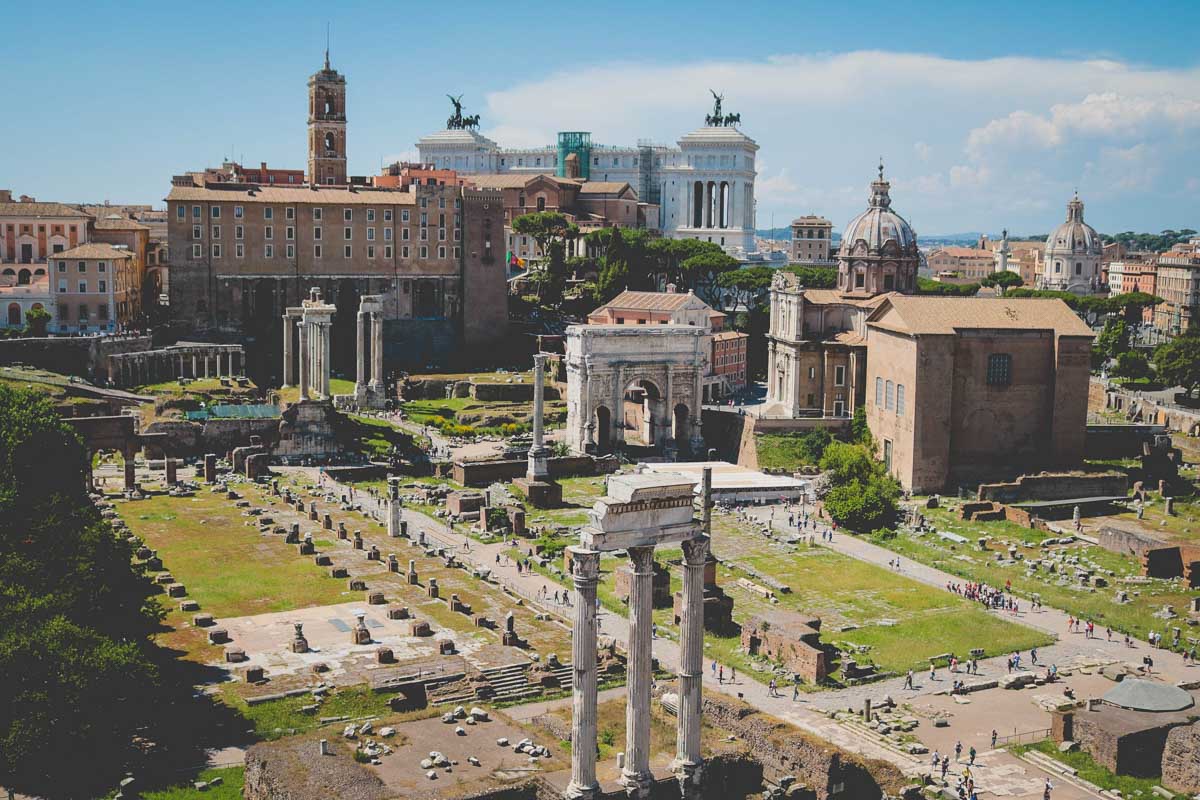
The Roman Forum in Rome
2. Rome is the most visited city in Italy
In 2019, more than 9 million tourists visited Rome, making it the most visited city in Italy before Milan and Venice.
It ranks as the 3rd most visited city in Europe after London and Paris, and overall 16th most visited city in the world.
3. Rome is 2,500 years older than the Republic of Italy
The united country of Italy that we know today hasn’t always been this way.
In fact, it was divided for a very long period of time in history, with several different independent kingdoms all over this part of Europe.
It’s only on 17 March 1861 that the Kingdom of Italy was created, forming modern Italy.
Rome is thus 2,614 years older than Italy, as it was founded in 753 BC.
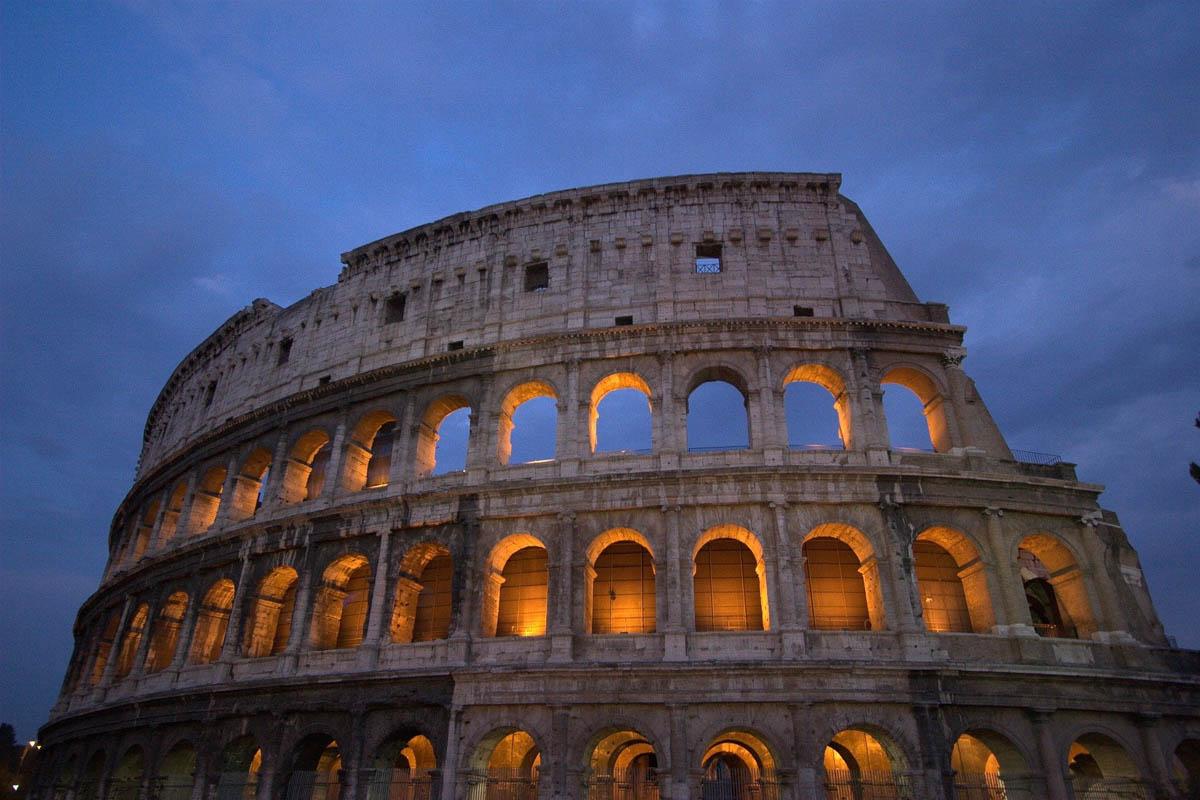
The Colosseum, Rome
4. Rome became the capital of Italy in 1871
As surprising as it might seem, Rome wasn’t always capital of Italy.
Right after the unification of Italy, the capital was Turin, from 1861 to 1865. Then the capital moved to Florence, from 1865 to 1871.
And finally, Rome became the capital of Italy in January 1871.
5. The nickname of Rome is Caput Mundi, Italian for Capital of the World
Actually, Rome has several nicknames.
It’s first known as The Eternal City, or Urbs Aeterna. This nickname was first used by poet Tibullus in the 1st century BC. It was then picked up by 2 other poets later on, Virgil and Ovid.
But the city is also known as Caput Mundi, Capital of the World. This nickname came from the central position of Rome in ancient times, when it dominated most of the known world.
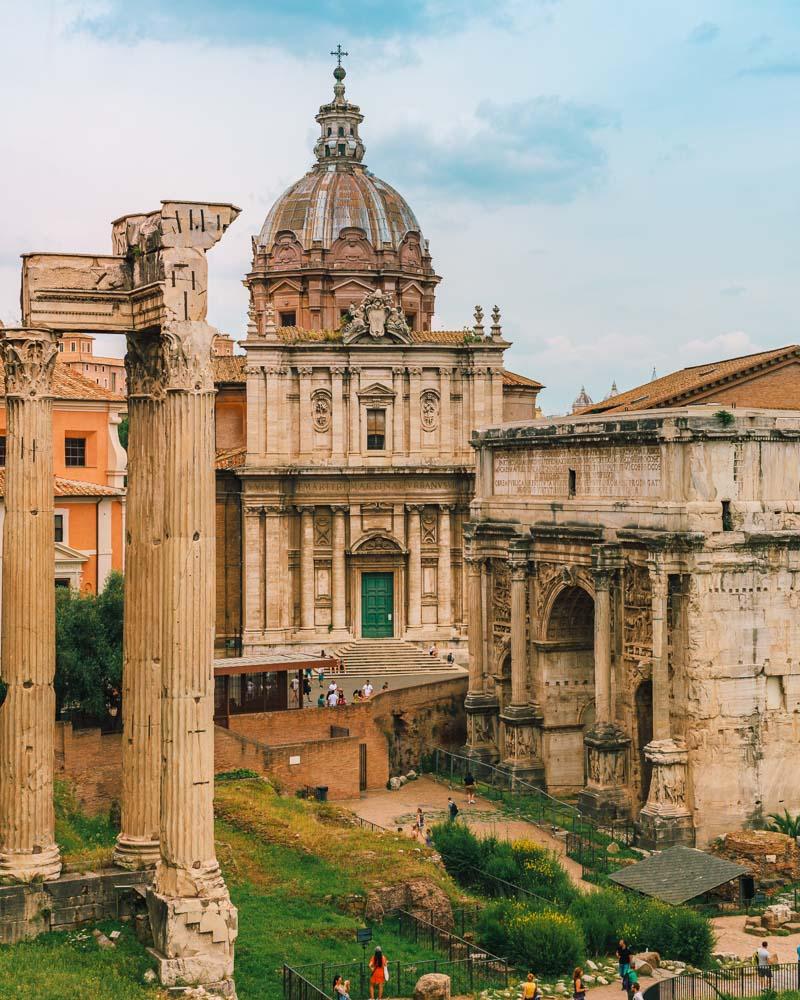
6. There are more than 2000 fountains in Rome
Wait, how many?! Yes you read that right, there are over 2 thousand fountains in Rome.
Most of the fountains are small fountains, known as nasone, Italian for big nose, providing free drinking water to all Romans.
But there are also some pretty impressive fountains, way bigger than the nasoni, built in ancient times. The most famous are the Trevi Fountain and the Fontana della Barcaccia.
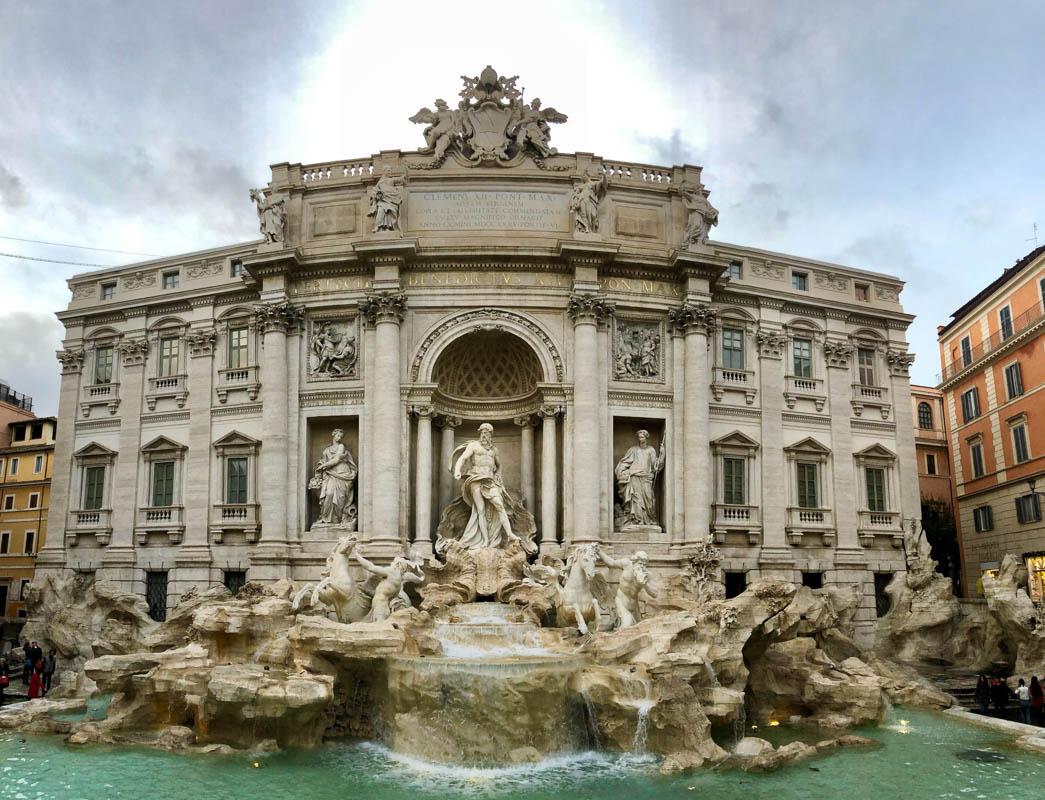
Trevi Fountain in Rome
7. More than 1.3 million euros is tossed every year in the Trevi Fountain
Legend has it that if you throw a coin in the Trevi Fountain, you’ll return to Rome. And if you throw 2 more coins, you’ll find love. It’s definitely a bucket list thing to do when in Rome.
As a result, millions of tourists flock to the fountain each year to toss coins in there. An estimated 1.3 million euros is tossed every year in the fountain, or 3,561€ per day.
The money is gathered every night by government workers, and donated to Caritas, a nonprofit organization.
8. Rome was the first city in the world to reach 1 million inhabitants
This is a pretty interesting fact about Rome, that shows just how Rome was the center of the known world in ancient times.
Rome reached 1 million inhabitants in 133 BC; as a comparison, Paris only reached that number in 1850, and London in 1810.
Yes, that’s how massive ancient Rome really was.
At its peak, the Roman Empire in its entirety had around 90 million people.
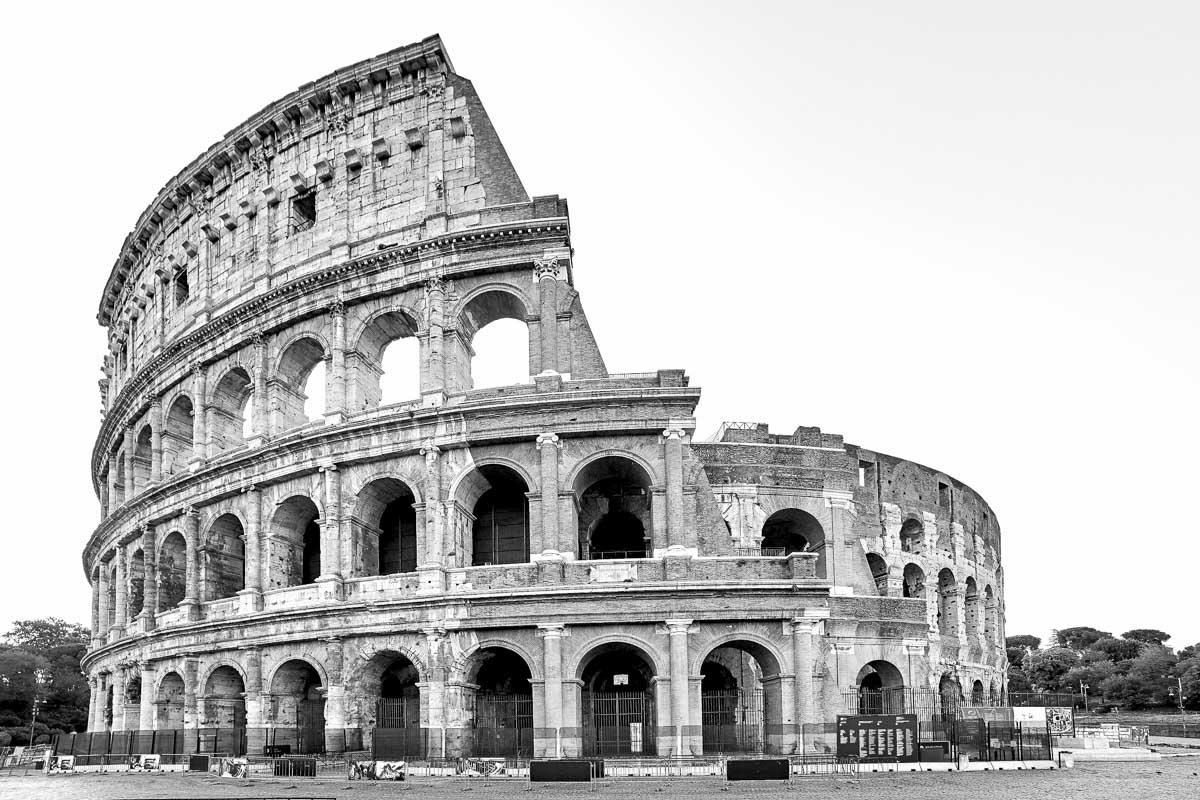
9. Rome is the most populated city in Italy
Today Rome is no longer the most populated city in the world.
In fact, it only ranks 89th on the list.
However Rome is the most populated city in Italy, with a population of 2,879,728 inhabitants in the city. This equals to a density of 2,236 people per km² (5,790 per square miles).
10. In ancient times, Rome was 32 times more densely populated than today
Can you imagine?! This is definitely one of the crazy facts about Rome history.
With a population around 1 million, and the city contained in the Aurelian Walls within 13.7 km², population density in Ancient Rome was 73,000 people per km² (189,000 per square mile).
This is 32 times more than today’s density in Rome! And 6.6 times more than New York City.
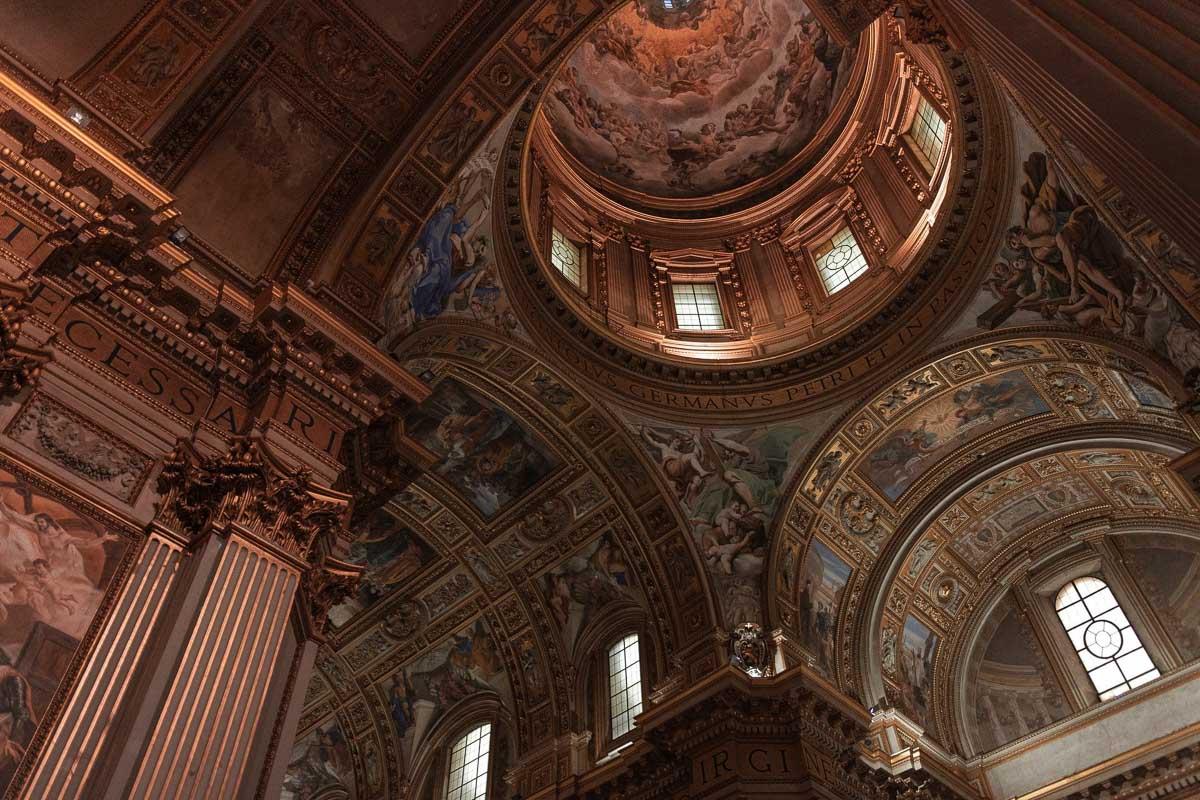
11. Rome is the city with the most Christian churches in the world
There are more than 900 churches in Rome, with most of them being Christian churches.
If you add into the mix the chapels located in private residences, convents or palaces, the number goes up to 1,600!
12. The first shopping mall in the world was built in Rome, in 110 AD
The very first shopping mall in the world was built in Ancient Rome, in 110 AD.
It was named Trajan’s Market, and built by Greek engineer Apollodorus of Damascus under orders of Roman Emperor Trajan.
The Trajan’s Market was a giant covered place with 2 floors and more than 150 rooms. Most of them were shops, but there were also restaurants and libraries!
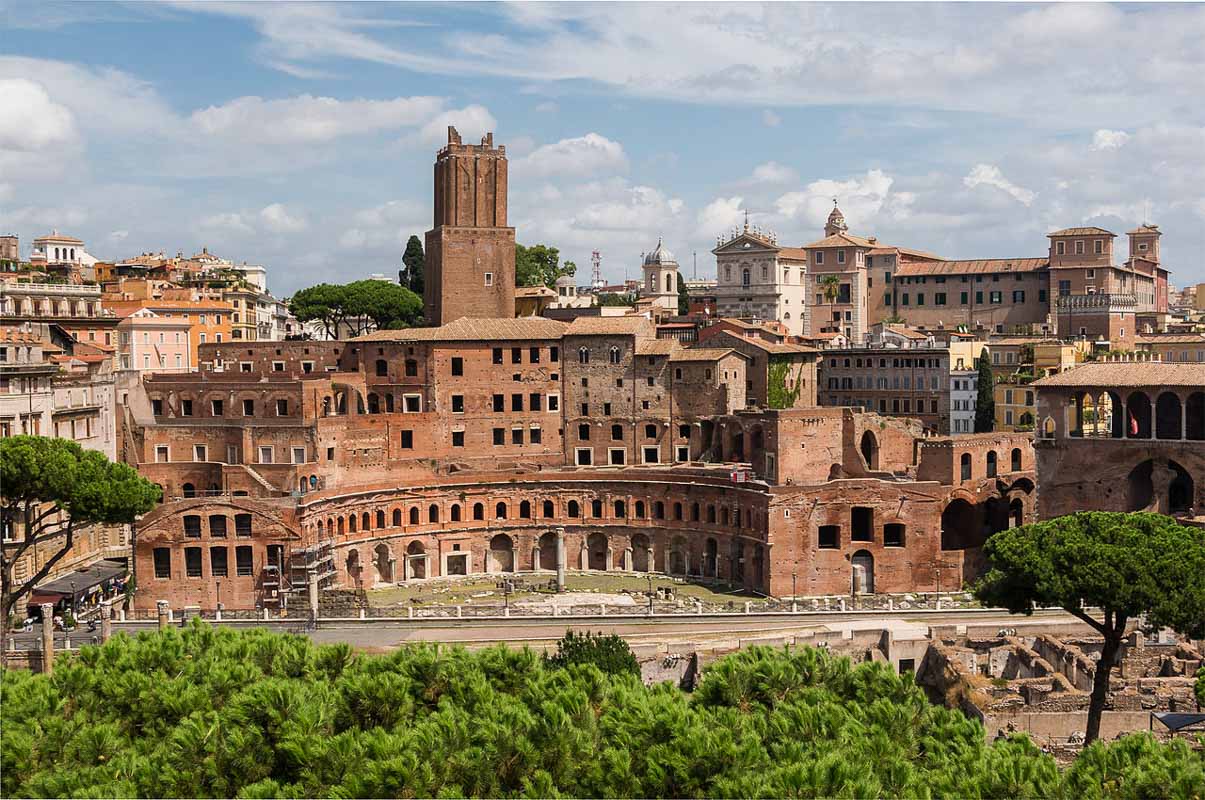
Remains of the Trajan’s market in Rome
13. La Sapienza University in Rome is one of the largest universities in Europe
La Sapienza University is the biggest university in Rome, and one of the most prestigious. It’s also known as the University of Rome, and taught many Nobel prize winners, famous scientists and politicians.
With 147,000 enrolled students, it’s one of the largest in Europe.
It’s also one of the oldest universities still in operation, and was founded in 1303 under the Papal States.
14. The Pantheon has been used for close to 2,000 years
Let’s go back in time even more with this next one on the list of interesting facts of Rome.
The Pantheon is one of the main landmarks in Rome, and definitely a must-see in the city. It’s a massive Roman temple, built in 125 AD by Consul Marcus Agrippa under the reign of Emperor Augustus. The original building was destroyed during a massive fire in 80 AD, and rebuilt later by Emperor Adrian.
Today the Pantheon is a Catholic church and is still in use, 2,000 years later.
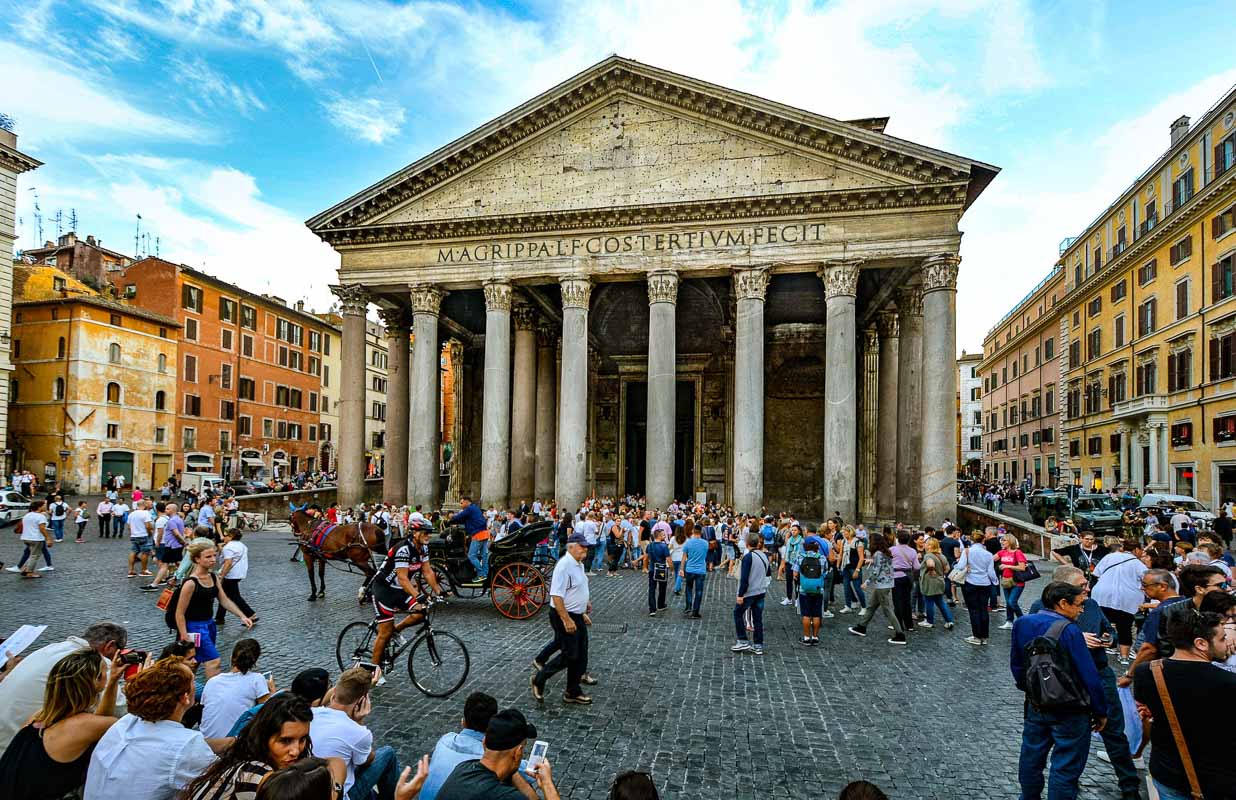
The Pantheon in Rome, Italy
15. Vatican City is located inside Rome
Vatican city is the smallest independent state in the world, ruled by the pope.
This small state, who’s been recognized as independent from Italy on 11 February 1929, has an area of only 0.44 km² (0.17 square miles).
It’s located entirely inside the city of Rome, and you can just simply walk in the street in Rome and end up in Vatican.
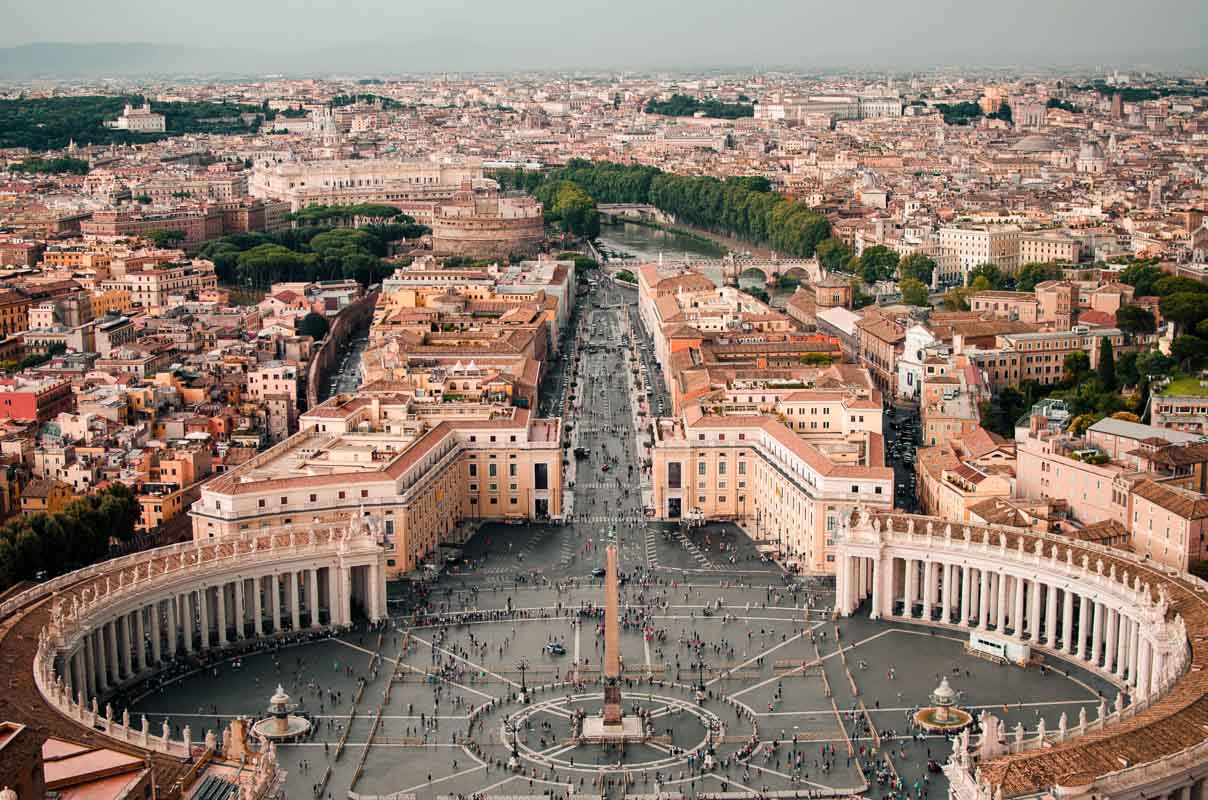
View over Vatican city; at the end of the street, it’s Rome
16. St Peter’s basilica in Vatican City is the biggest church in the world
The most famous landmark in Vatican City is probably Saint Peter’s Basilica, or the Papal Basilica of Saint Peter in the Vatican.
It brings catholics from all over the world, to attend the pope’s liturgies: from 15.000 to 80.000 people per liturgy!
The basilica is also the biggest in the world, in both interior area and capacity.
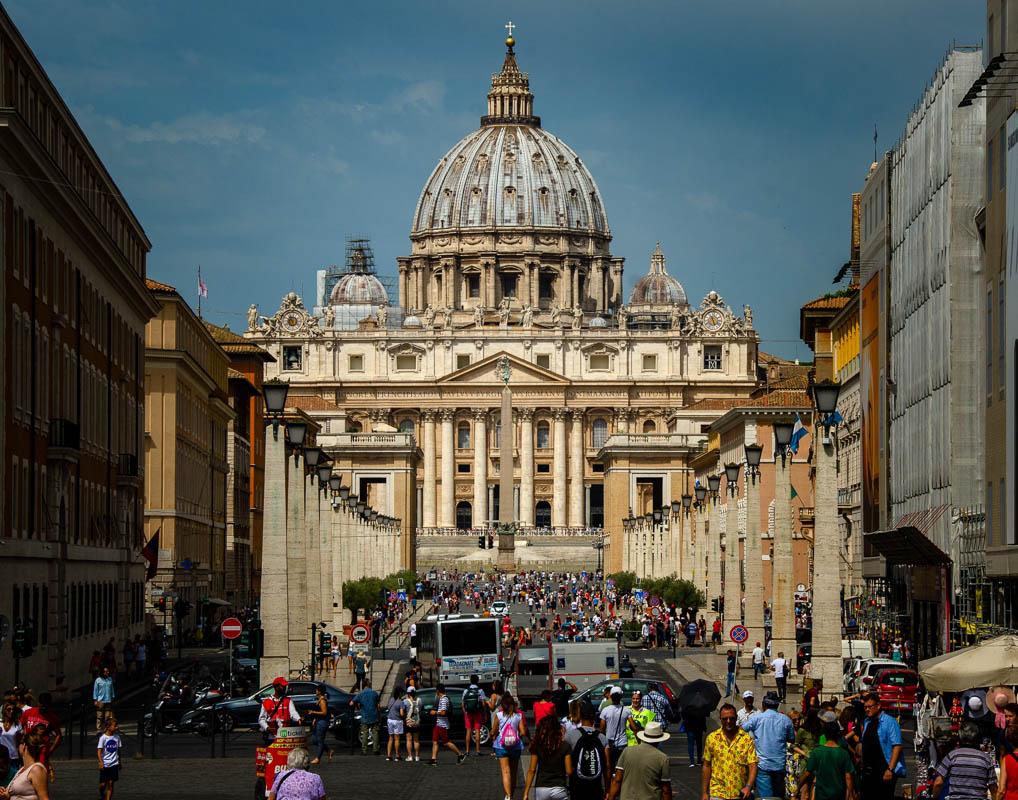
St Peter’s Basilica in Vatican City
17. There is a secret passage from Vatican to Castel Sant’Angelo
This is one of the lesser known facts about Rome in Italy; the secret passage to escape Vatican.
The Passetto del Borgo is a secret corridor that leads from Vatican City to the nearby Castel Sant’Angelo.
It was used during the siege of Rome in 1527, when Pope Clement VII escaped when the army of Charles V killed almost all of the Swiss Guard; he then stayed in the castle for six months.
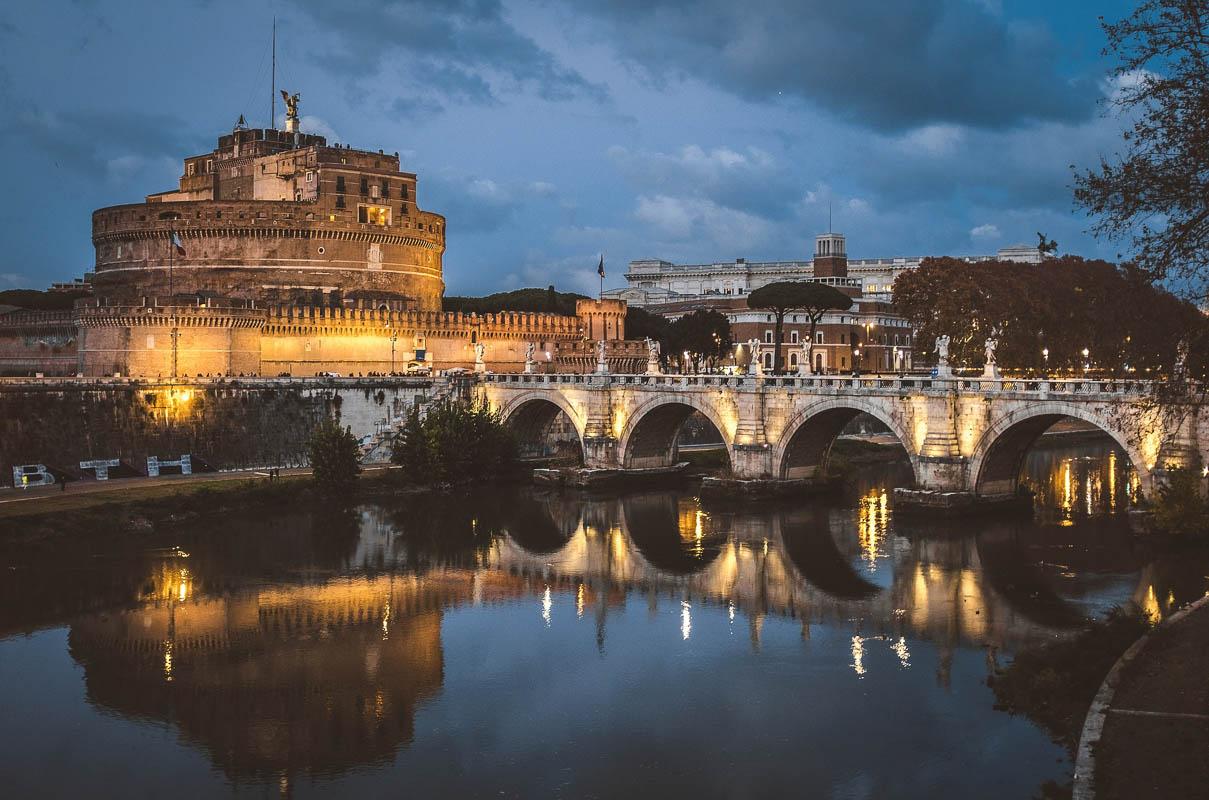
The Castel Sant’Angelo in Rome
18. SPQR is the symbol of the city
In Rome, the symbol SPQR is all over the city: on the coat of arms of Rome, the ancient monuments, manhole covers, and official buildings for example.
But what does it mean?
SPQR stands for Senātus Populusque Rōmānus; latin phrase meaning “The Senate and Roman People”. It refers to the double sovereignty of the Senate and the Roman citizens over the city and the whole empire.
19. The Colosseum is 1 of the 7 new wonders of the world
The Colosseum is the most famous landmark in Rome.
It’s a massive amphitheater, built by the Romans in 80 AD. The Colosseum could hold up to 50,000 to 80,000 spectators, which is pretty impressive for something built literally 2,000 years ago.
It was named as one of the 7 new wonders of the world in 2001.
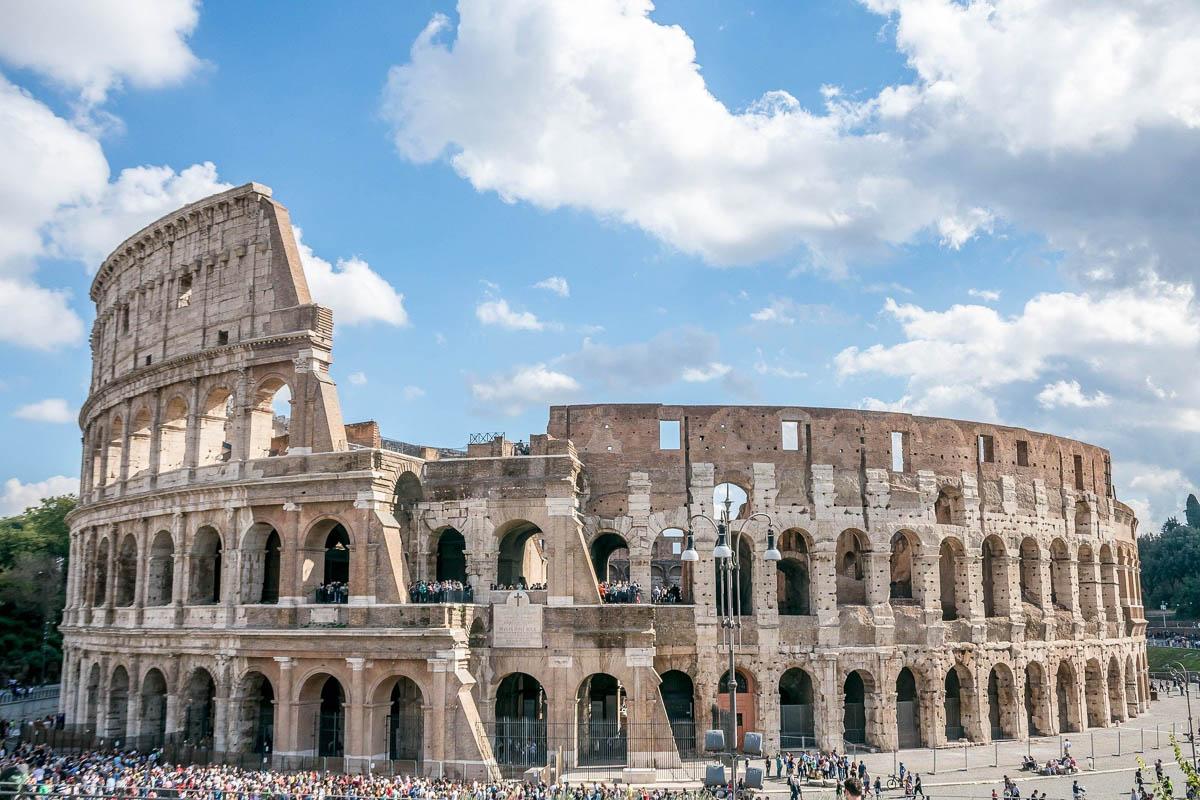
20. Gladiator fights were very popular
Gladiator fights were one of the main events hosted in the Colosseum.
The fighters were most often slaves, and they fought against each other in massive fights to entertain the crowds.
At the beginning, these fights were fight to death: gladiators who lost the battle or got injured were sentenced to die on the field. In later years, this rule changed and very few gladiator died (only 19 died under Caesar).
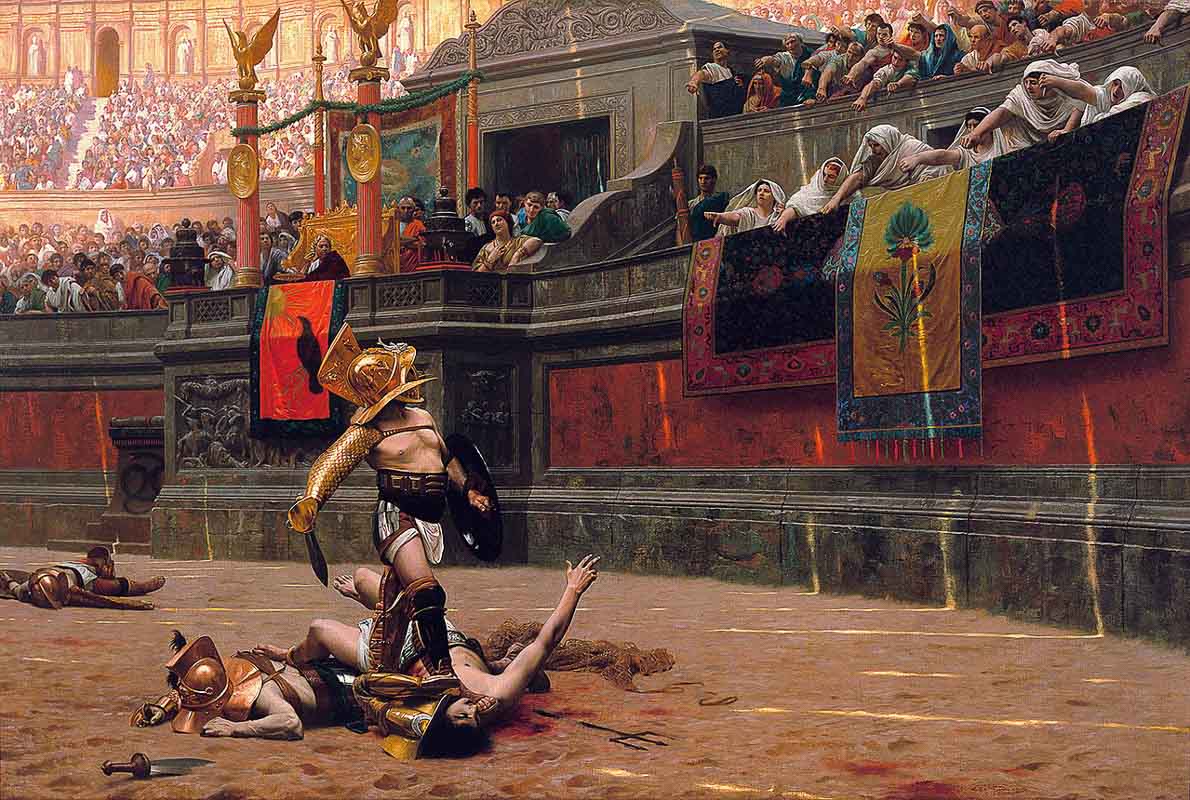
21. The Colosseum was sometimes completely flooded to host naval battles
When the Colosseum first opened in 80 AD, it hosted a naumachia: a naval battle.
The amphitheater was flooded, and gladiators fought in ships and in water. These events were pretty popular, and hosted several times in the amphitheater, but also outside in lakes.
22. Over 500,000 gladiators and 1 million animals were killed during the Colosseum fights
Animals were often used in the Colosseum and in gladiator fights in general.
They were either used in executions ad bestias, where a prisoner was sent to die in the arena with wild animals, or in fights against gladiators.
For the inauguration of the Colosseum in 81 AD, the games lasted 100 days. During the games, more than 9,000 wild animals were killed, including wolves, snakes, hyenas, giraffes, lions and tigers among others.
The Romans killed so many animals during the shows, that some species even became extinct.
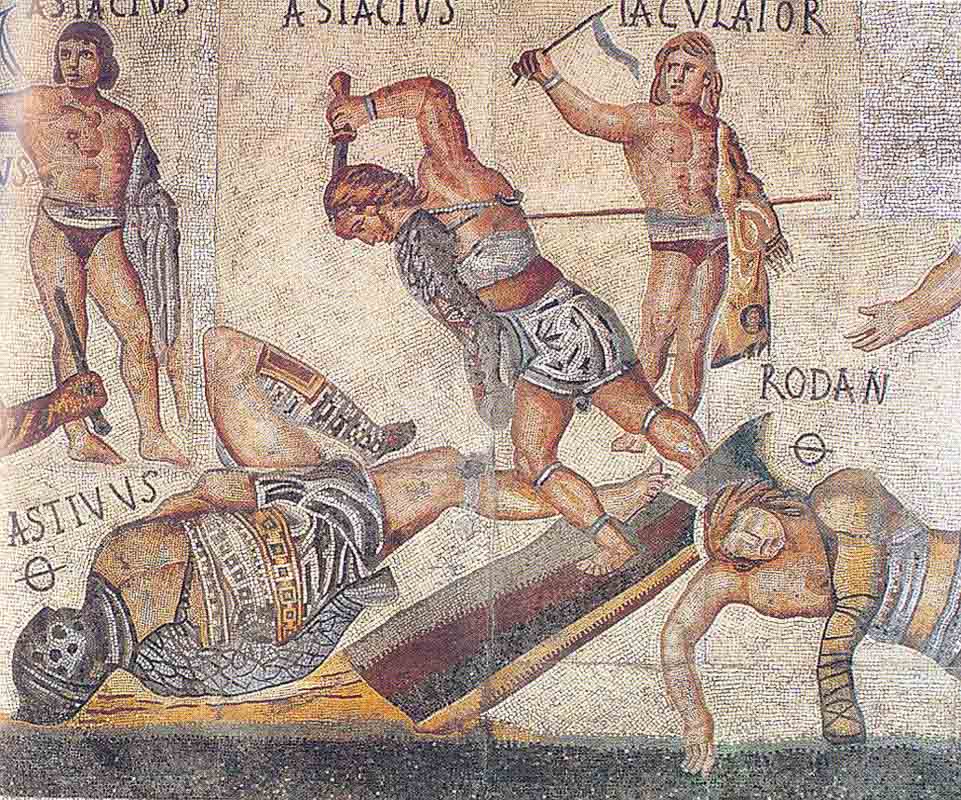
23. The Colosseum wasn’t originally named Colosseum
The Colosseum was built after the reign of Roman Emperor Nero, and started by Emperor Vespasian in 72 AD.
Construction took several years, and finished in 80 AD under Vespasian’s son, Titus. Vespasian and Titus were members of the Flavian Dynasty, and as such, the amphitheater was first known as the Flavian Amphitheater.
The name Colosseum only came later; near the entrance was a colossal statue of previous emperor Nero. As years went by, the Romans started to refer more and more to the amphitheater as “Colosseum”, after the Colossus statue.
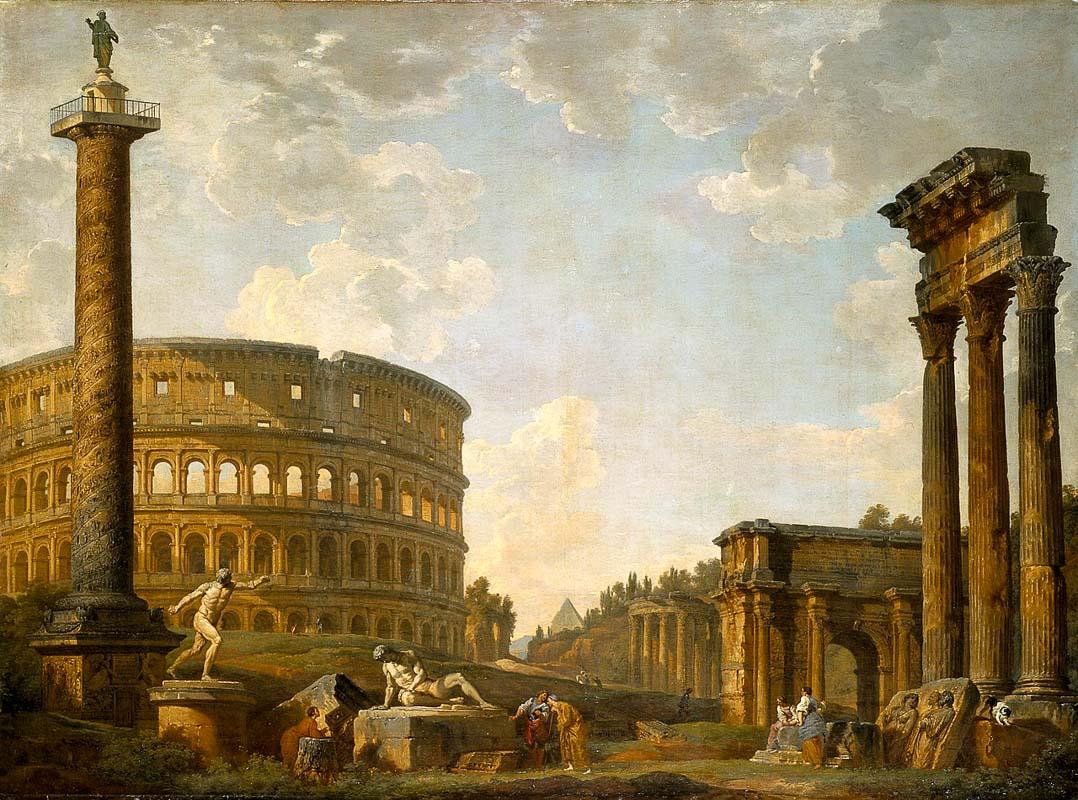
Roman Capriccio by Giovanni Paolo Panini
24. Rome was founded on 7 hills
The city of Rome was built on 7 hills, also known as the 7 hills of Rome:
- Aventine Hill
- Caelian Hill
- Capitoline Hill
- Esquiline Hill
- Palatine Hill
- Quirinal Hill
- Viminal Hill
Palatine Hill was, according to the founding legend of Rome, the original hill on which Rome was founded.
25. The word palace comes from the Palatine Hill in Rome
As we saw above, the Palatine Hill is one of the 7 hills in Rome, and the foundation of the ancient city.
The word “palatium” in Latin was used to describe the place of power, as the residences of the emperors were set on the Palatine hill.
It later evolved to “palace” in English (and similarly in other languages), and thus the word palace comes from the Palatine hill.
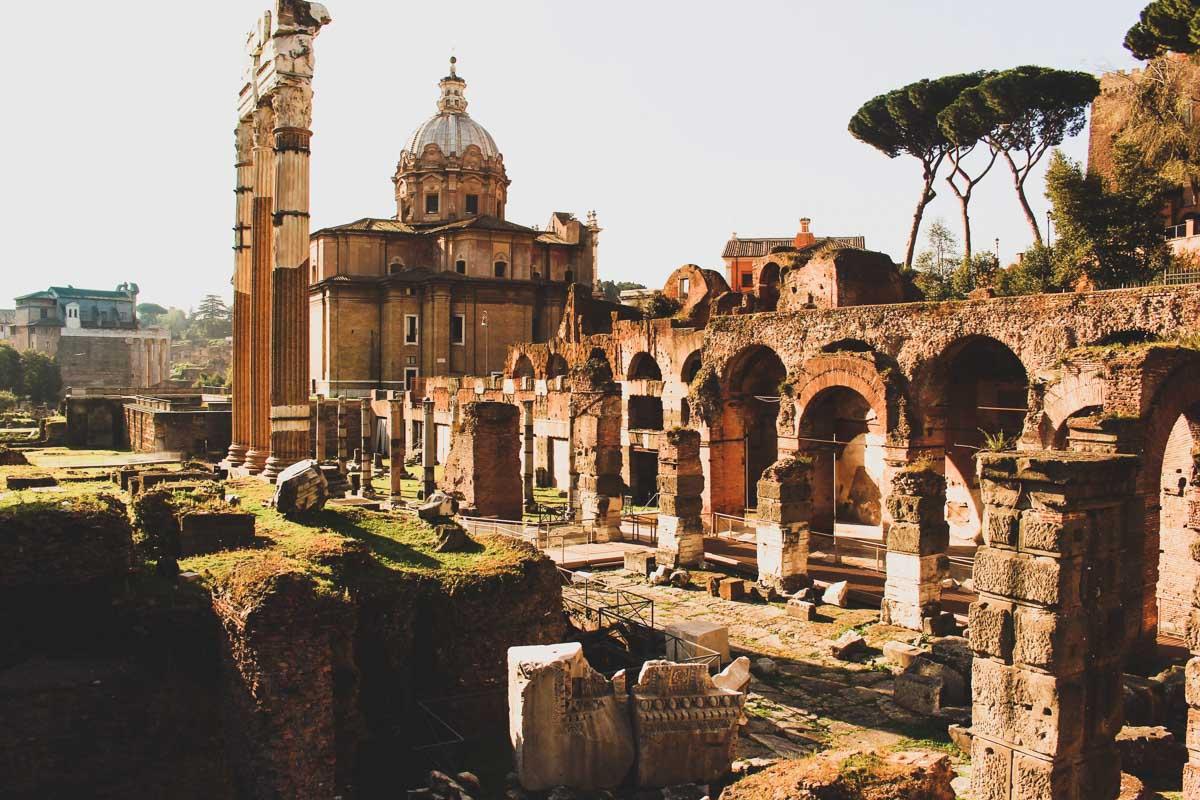
The Roman Forum near Palatine Hill
26. The Roman Forum was the center of the city
The Roman Forum is the main square of Rome, and it was the center of Ancient Rome.
At first, it was mostly used as a market place, and people came there to purchase all sort of goods to merchants. Over time, the Forum grew bigger, with several buildings being constructed around, like the Senate House and the Temple of Saturn.
The plaza was then used for all sort of public events, such as public speeches, criminal trials, business meetings and even elections.
27. Purple clothes were reserved for Emperors and Senators in Ancient Rome
This next fact is among the facts of Ancient Rome: and particularly to their clothes.
While today you can dress in virtually any color you want, in Ancient Rome there was one color that you couldn’t wear: purple.
In fact, only the Roman Elite was allowed to wear purple.
28. Julius Caesar was assassinated in the Curia of Pompey
Julius Caesar is one of the most famous Roman leaders, and ruled as a dictator from 49 BC to 44 BC.
He was murdered on 15 March 44 BC by a group of 60 senators, including one of his close friend, Brutus.
The scene took place when Caesar arrived at the Senate, in the Theatre of Pompey. Caesar was stabbed 23 times in the curia, a court at the back of the Theatre.
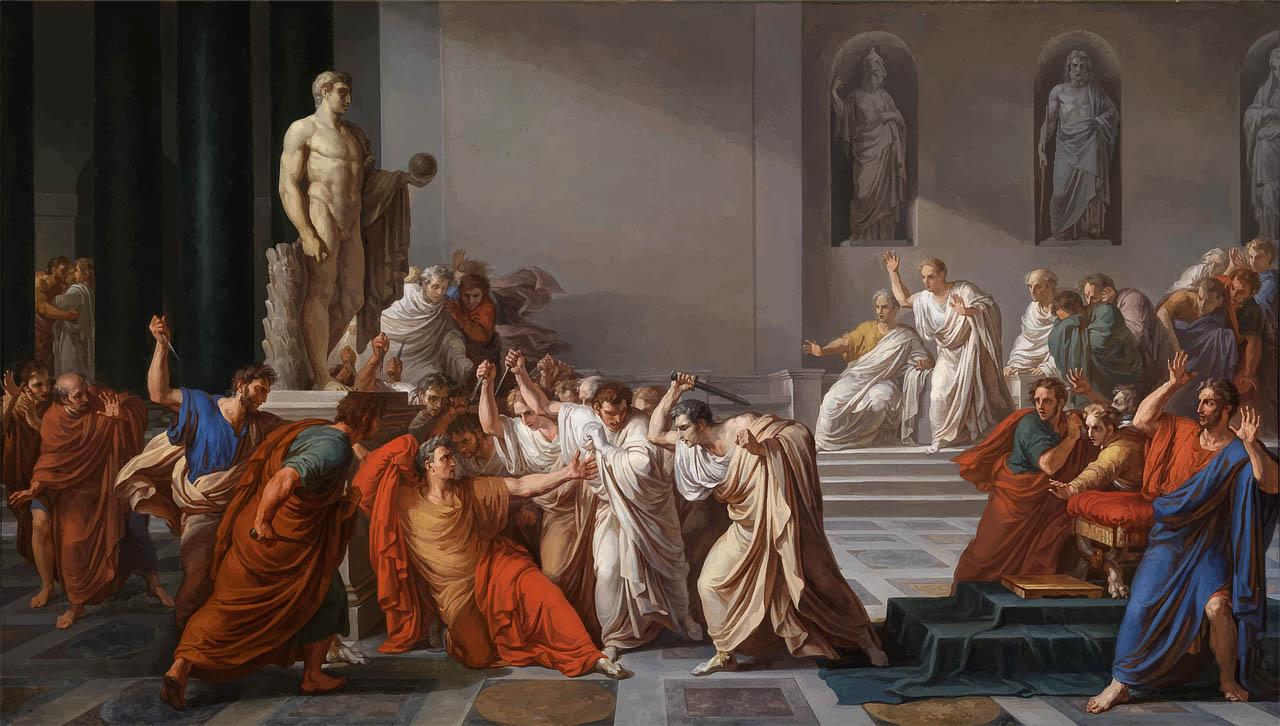
The assassination of Julius Caesar
29. The original city of Rome is now deep underground
What you can see today in Rome is far from how Rome looked in ancient times.
This is due to several factors. First, architects would often tear down the roofs of existing buildings, fill the building with dirt, and build new construction on top of old ones.
The Tiber river also flooded frequently, and added layers of dirt to the floor of the city.
More than 2,000 years later, the floor of Rome has risen up considerably, and the original city of Rome is now deep underground.
30. Only 10% of Ancient Rome has been excavated
The famous Roman ruins in Rome are just a small fraction of the remains of the Roman civilization.
They are the only few monuments that were excavated, and brought above ground. But truth is, most of the city is still uncovered!
Excavating ruins is very expensive, and maintaining ancient monuments costs a lot of money too. These are 2 of the main reasons as to why more of Ancient Rome still hasn’t been excavated, and if you start construction work in Rome you’ll undoubtedly find ruins underground.
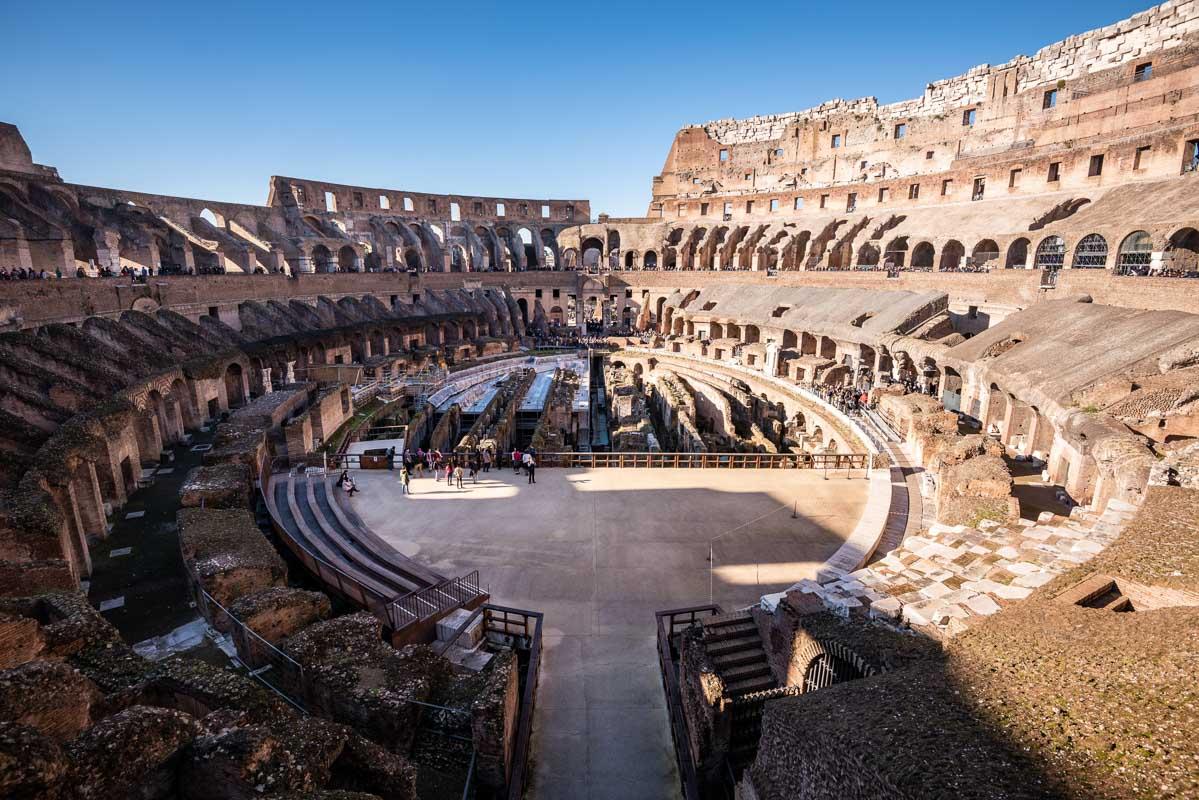
Inside the Colosseum
31. In Ancient Rome, gladiator blood was a popular medicine
Back in ancient history, gladiators were considered as superstars by citizens.
So much so that the blood of these brave warriors was a popular medicine in Ancient Rome.
Drinking warm gladiator blood was the the main cure for epilepsy, and if a woman couldn’t get pregnant, a doctor would prescribe gladiator blood.
32. There are 2 football teams in Rome
Let’s leave Ancient Rome behind for a while and see one of the facts about modern Rome.
Just like Milan, Rome has 2 football teams in the top division: AS Roma and SS Lazio.
Both team share the same stadium, the Stadio Olimpico, and the derby between both team is always a major event in the city.
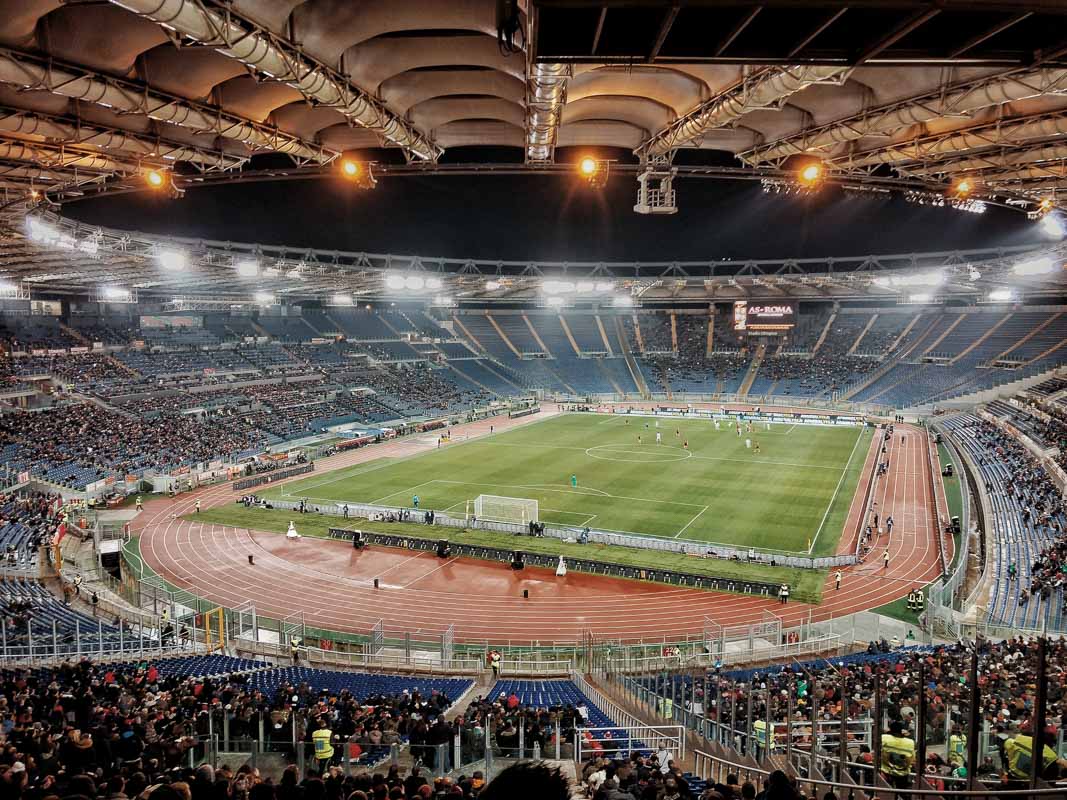
The Stadio Olimpico stadium in Rome
33. Romans were the first to use concrete for construction
Did you know that Romans were using concrete to build their city, more than 2,200 years ago?
Roman concrete was known as opus caementicium; and was made from volcanic dust mixed with lime, rock pieces and sea water.
The concrete used by Romans was way better than today’s concrete, and lasted 40 times more (at least 2,000 years vs 50 years).
34. All roads did lead to Rome
As the popular saying goes, “All roads lead to Rome”. And they do, indeed.
The Romans built a very wide network of roads to expand the Roman Empire; the starting point of this massive road network was Rome, hence the saying.
At its peak, the road network was 84,631 km long (52,587 miles), and spanned from London to Egypt.
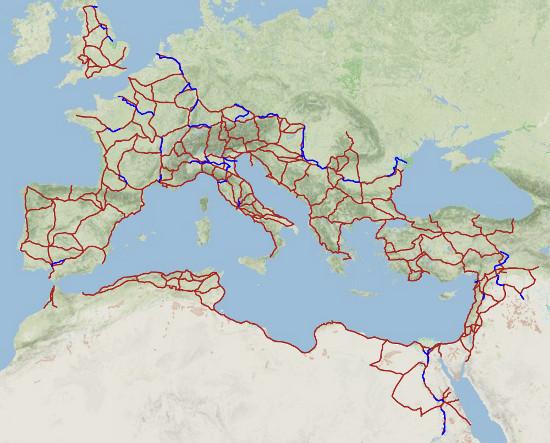
Roads of the Roman Empire by Orbis | Stanford
35. The Roman Army could walk 40km each day (25 miles)
The road network was one of the key to the expansion of the Roman Empire.
It allowed the Roman Army to quickly move to another part of the empire, to respond to external threats or simply to maintain the empire.
The military was known for its fast pace, mainly thanks to the roads. The Roman Army could walk as fast as 40km per day (25 miles per day), which means they could walk from Rome to Naples in only 5 days.
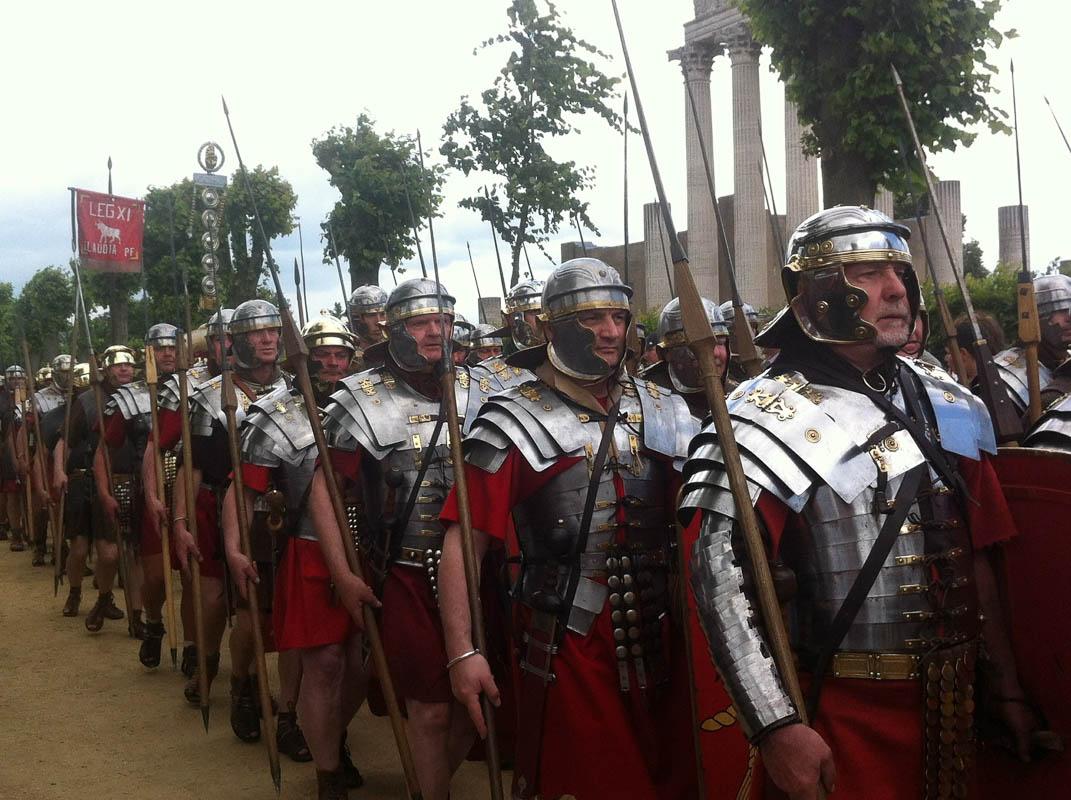
36. Roman Citizens wore togas, but it was forbidden for slaves and foreigners
And finally, the last of the main interesting facts Rome has to offer; about clothes!
The Toga is the cloth usually associated with Ancient Rome. It’s a simple cloth, draped over the body, and you will see it on most of the statues and representations of Roman citizens.
But the toga was only reserved to Roman citizens; foreigners and slaves were not allowed to wear a toga.
The toga was initially also worn by women, but after the 2nd century BC, it was reserved to men. Women then wore the stola, more similar to a dress.
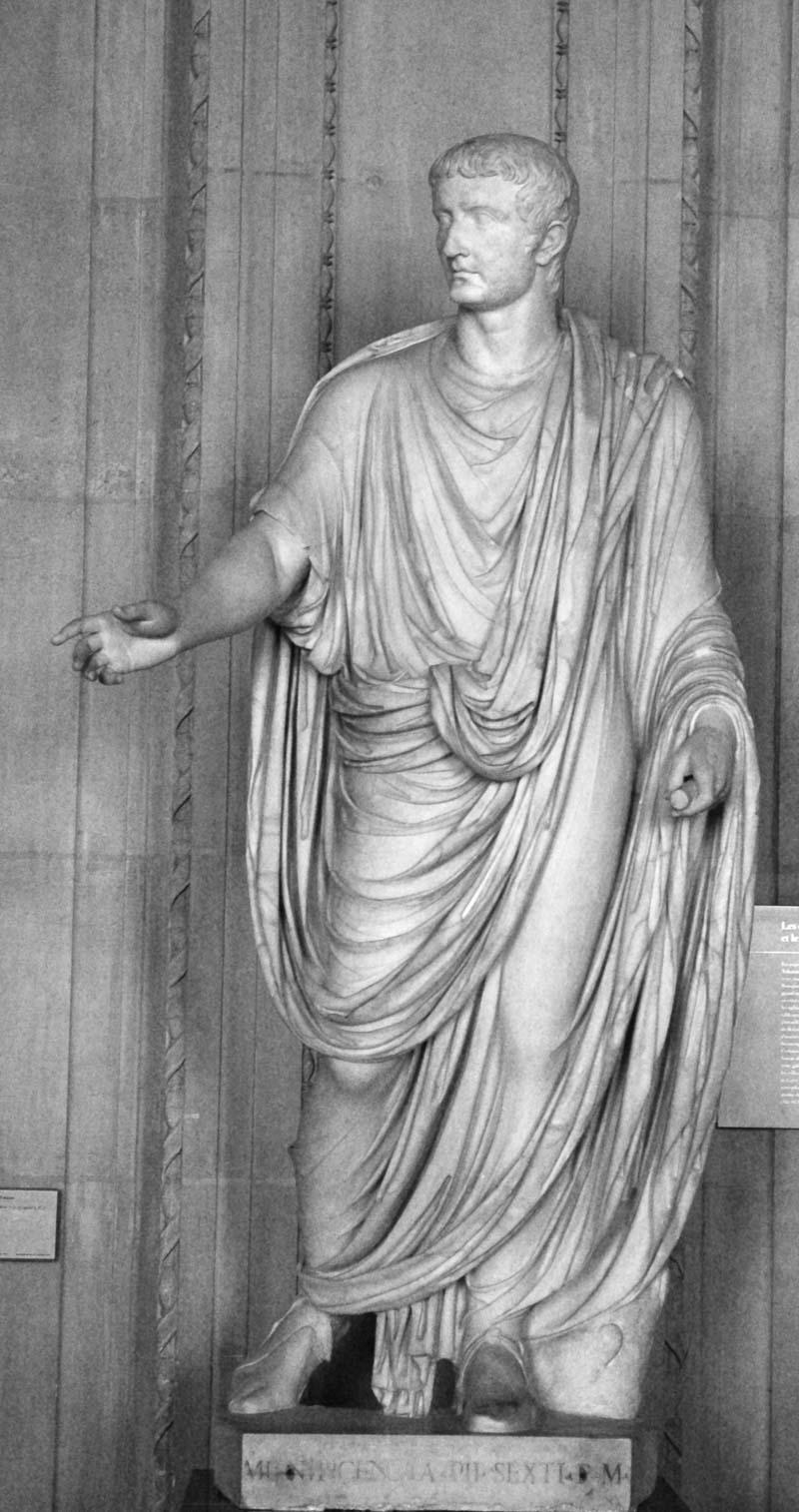
Second Roman Emperor Tiberius wearing a toga
Fun Facts about Rome Italy
Don’t worry, there are still a few facts Rome has to offer!
In this part, we will see some of the fun facts about Rome, both in Ancient Rome and in Modern Rome.
37. Women in Ancient Rome dyed their hair red and blond
Dyeing your own hair red is nothing new. Women in Ancient Rome were doing it way before it was cool.
The most popular color was blond, even though it was associated with prostitutes who were obligated by law to dye their hair blond to be easily recognized. Other popular colors were red and black.
To dye their hair, women would use mixtures made with surprising ingredients such as leeches, vinegar, beech wood ashes or even goat fat.
38. There’s a pasta museum in Rome
Another fun fact about Rome is that they have a pasta museum!
The Museo Nazionale della Pasta Alimentari, or National Museum of Pasta Foods, was founded in 1993. It’s entirely dedicated to pasta. The history of pasta. The evolution of pasta. All things pasta!
In the museum, you’ll learn how pasta was born, how it’s made, and you’ll see various works of art made of pasta. No, you can’t eat them.

39. Saturnalia was a festival in ancient Rome where masters and slaves would switch places
In Ancient Rome, there were the masters, and the slaves. Slaves made for about 30% of the population in the 1st century BC, and it was just part of the civilization at the time.
Slaves were under the orders of their masters, and performed manual labor and many services in the household.
Now that you know all of the context, the Saturnalia Festival will seem even odder.
The festival took place every December 17th, and it was known for a weird tradition, the role reversal. For the duration of the festival (1 day in the beginning, then 1 week in later years), masters and slaves would switch places.
Masters would bring food to their slaves, slaves could speak freely and even disrespect their masters without fearing punishment.
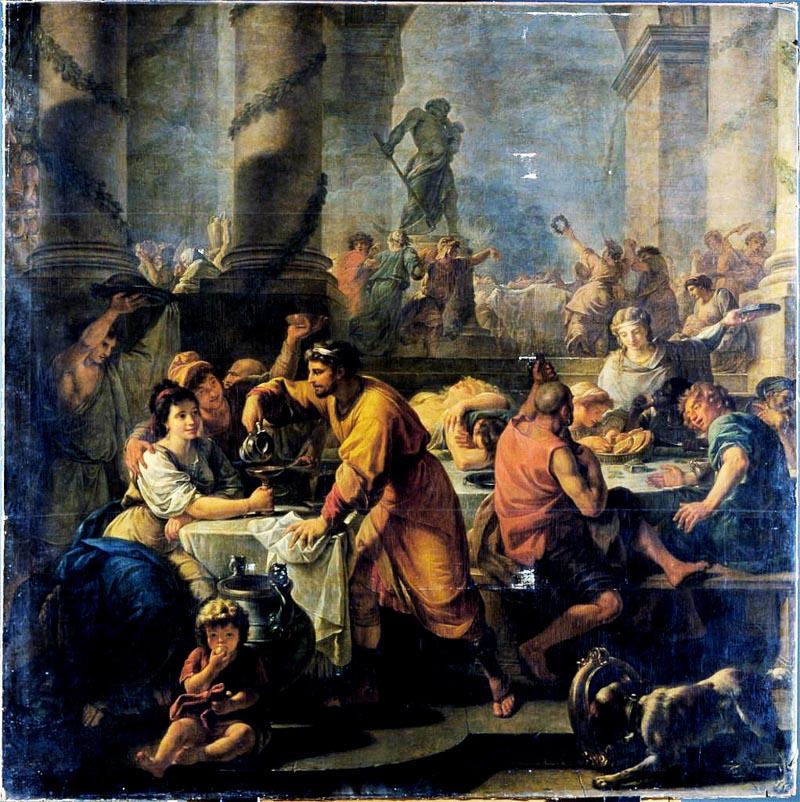
Saturnalia by Antoine Callet
40. Romans used to throw up between meals so that they could eat more
Ok not sure this one is among the fun facts on Rome, but it’s definitely an interesting one.
Romans loved banquets, and loved to eat luxurious food.
But what do you do when you’re full, but still want to eat? Well, you throw up so that you can eat more!
This behavior was described by famous Roman philosopher Seneca: “They vomit so that they may eat, and eat so that they may vomit.”
41. Roman Emperor Caligula almost appointed his horse as Consul
Caligula ruled from 37 to 41 ad, and was the 3rd Roman Emperor, after Augustus and Tiberius.
One famous story involving Caligula is about his horse: Incitatus.
Incitatus was treated to luxurious gifts, such as a precious collar, an ivory manger or a stable of marble; he was also attended by servants.
Caligula was often criticizing the consuls, and making jokes about them. He even joked that his horse could do their job, and that he would make his horse a consul.
This joke was interpreted in many ways, and today you’ll find many sources saying Caligula’s horse was made consul; he was not.
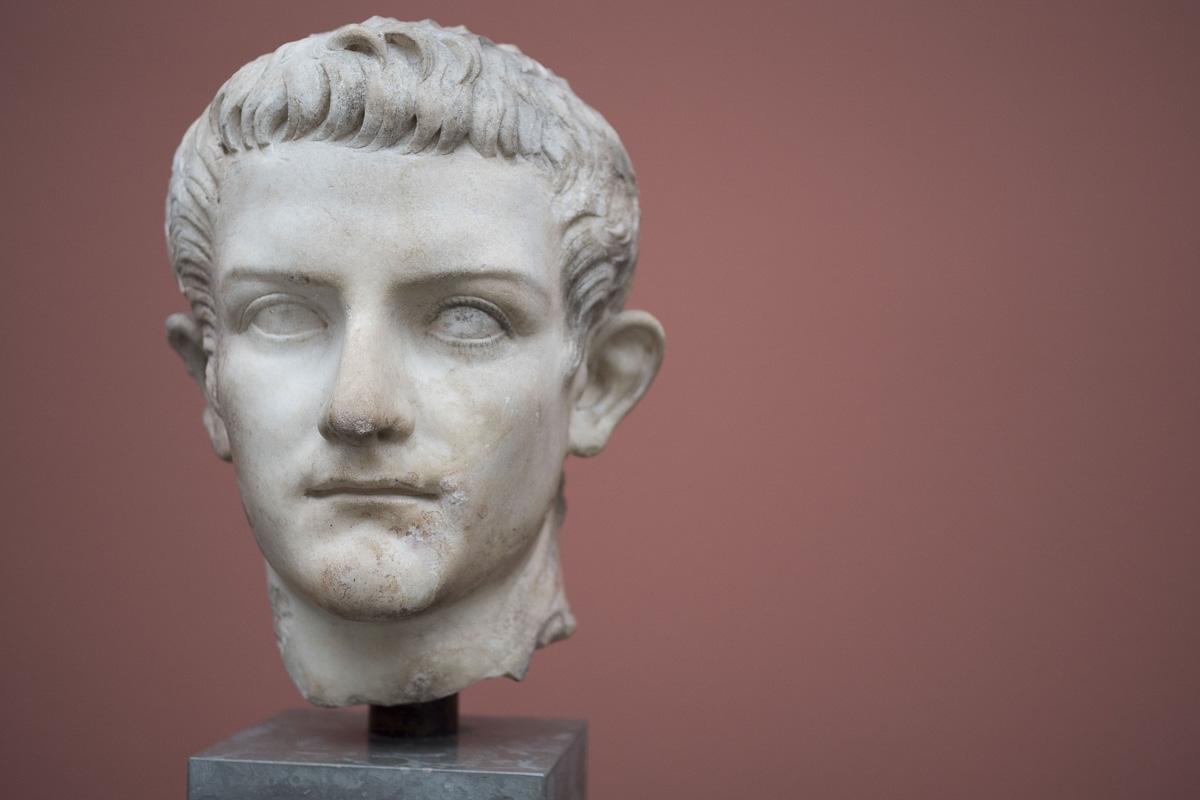
Sculpture of the 3rd Roman Emperor, Caligula
42. Flamingo tongues were one of the best foods
I’m pretty sure you wouldn’t consider eating the tong of a flamingo.
But in Ancient Rome, flamingo tongues were a highly sought-after dish, considered extremely delicious.
The Romans were so fond of it, that they slaughtered the pink animal en masse for their feeding frenzy.
43. Romans used to brush their teeth with urine
As Aulus Cornelius Celsus wrote in his medical work De Medicina (circa 45 AD), urine was prescribed as a mouth wash.
The ammonia contained in the urine was used to whiten the teeth, and it was common for Romans to use urine as a mouth wash.
They also used the urine for laundry, to clean their clothes!
44. There are around 300,000 wild cats in Rome
This is not counting the domesticated cats.
In Rome, there is a large population of wild cats, also known as feral cats. Estimations place this number at 300,00 feral cats roaming the streets of the city!
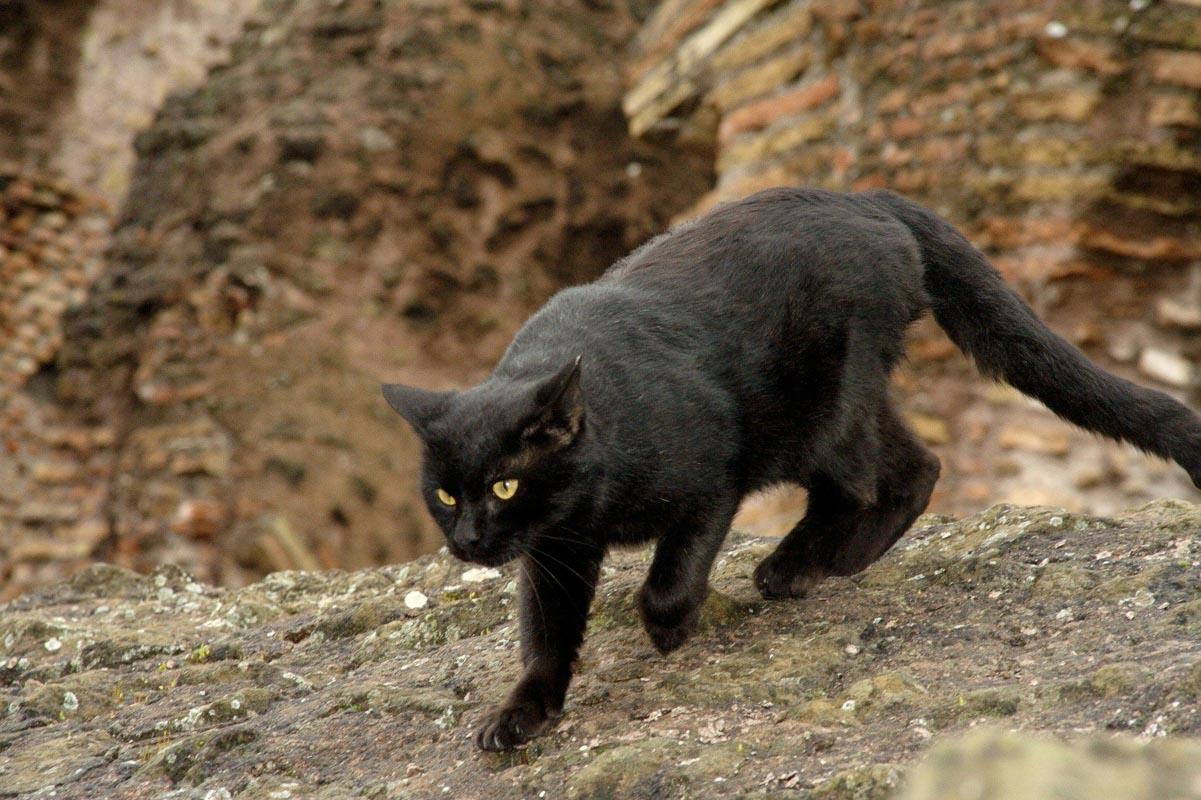
A wild cat in the Colosseum, Rome
45. Cats can live wherever they please, and they’re protected by law
This large population of cats was officially recognized by the city, and named part of the city’s bio-heritage in 2001.
In 1991, a special law was passed by the Italian government: it is illegal to kill a feral cat in Italy.
Also, it’s illegal to remove a cat from its colony, which means that feral cats can legally live where they were born, in their colony, and that they can’t be displaced.
46. Kissing on the lips was a standard greeting in Ancient Rome
While today kissing on the lips is mostly associated to a lover’s act, in Ancient Rome it was a standard greeting.
This greeting was restricted to the family circle, and it was common to kiss your parents, children and kins on the lips.
It was later discouraged by the Catholic Church, and soon became reserved to lovers.
47. Roman Emperor Domitian loved to make female gladiators fight dwarves
And finally, the last of our Rome facts!
Gladiators were men, and there is very little mentions in history of female gladiators. The female gladiator, or gladiatrix, would very rarely appear in fights, on special occasions.
The Emperor Domitian was probably a bit twisted in the head: he made topless female gladiators fight each other, and he would even make them fight against dwarves. These were very popular games among the Romans!
So there you have them, the 47 interesting facts about Rome Italy!
If you want to learn more about the city, keep reading for some general facts and info.
General Facts on Rome Italy
You’ll find below a few general facts on Rome Italy, to learn more about this Italian city:
- Name: Rome | Roma (Italian)
- Province: Metropolitan City of Rome
- Region: Lazio
- Land area: 1,285 km² / 496.3 square miles
- Population: 2,879,728
- Name of inhabitants: Roman | Romano/Romana (Italian)
- Website: Turismo Roma
Where is Rome? Rome on a Map
Rome is located in the central western part of Italy, in the Lazio region. It’s south of Florence, and north of Naples.
Here you can see it on the map, to have a better understanding of where it is in Italy:
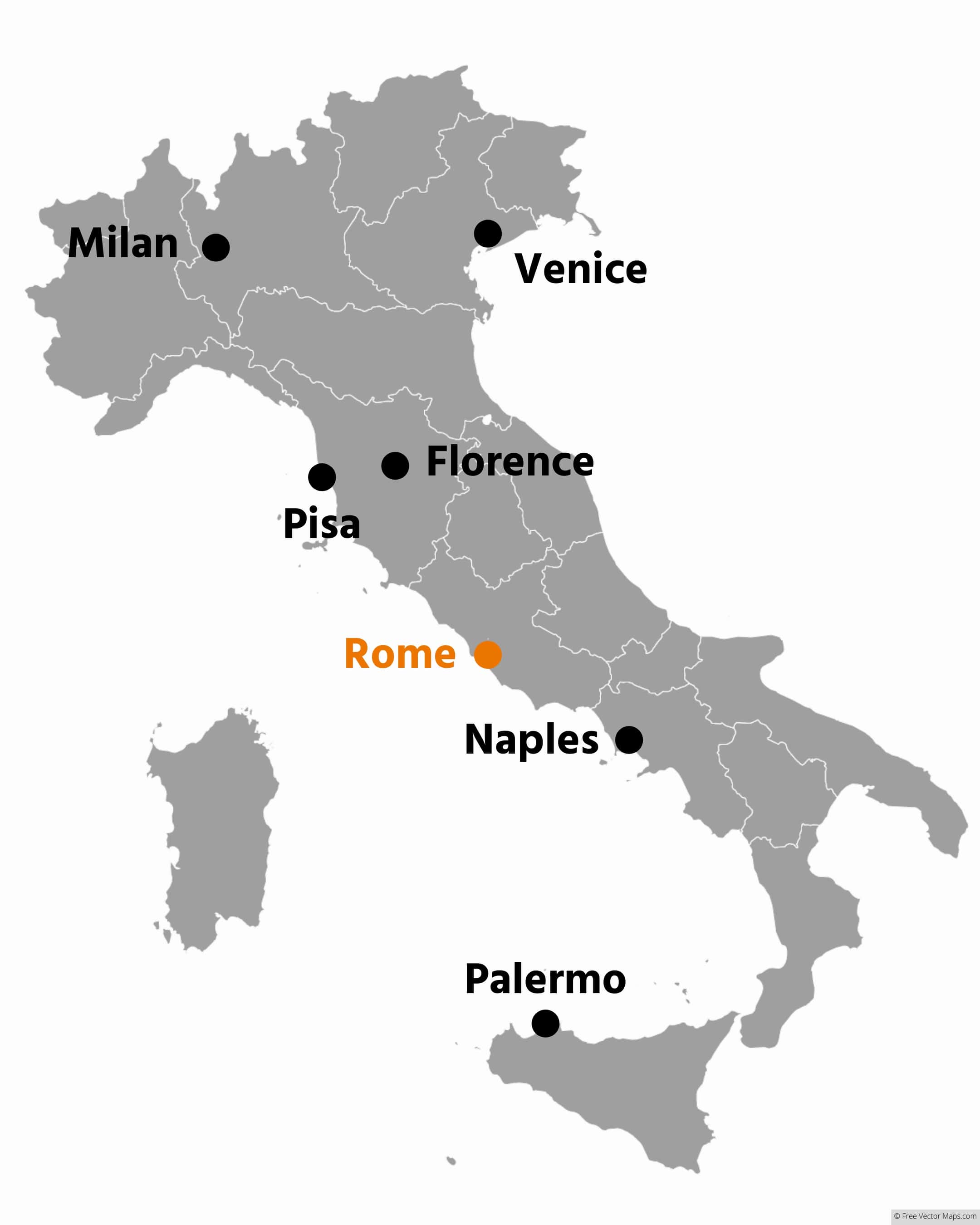
Rome Flag

More Facts!
Do you want even more facts about Italy?
Check out the following posts:
Or click here to see ALL the facts up on the blog! Spoiler alert: there is A LOT of them.
The Full List of 47 Rome Facts
- Rome was founded in 753 BC by Romulus
- Rome is the most visited city in Italy
- Rome is 2,500 years older than the Republic of Italy
- Rome became the capital of Italy in 1871
- The nickname of Rome is Caput Mundi, Italian for Capital of the World
- There are more than 2000 fountains in Rome
- More than 1.3 million euros is tossed every year in the Trevi Fountain
- Rome was the first city in the world to reach 1 million inhabitants
- Rome is the most populated city in Italy
- In ancient times, Rome was 32 times more densely populated than today
- Rome is the city with the most Christian churches in the world
- The first shopping mall in the world was built in Rome, in 110 AD
- La Sapienza University in Rome is one the largest universities in Europe
- The Pantheon has been used for close to 2,000 years
- Vatican City is located inside Rome
- St Peter’s basilica in Vatican City is the biggest church in the world
- There is a secret passage from Vatican to Castel Sant’Angelo
- SPQR is the symbol of the city
- The Colosseum is 1 of the 7 new wonders of the world
- The Colosseum was sometimes completely flooded to host naval battles
- Gladiator fights were very popular
- Over 500,000 gladiators and 1 million animals were killed during the Colosseum fights
- The Colosseum wasn’t originally named Colosseum
- Rome was founded on 7 hills
- The word palace comes from the Palatine Hill in Rome
- The Roman Forum was the center of the city
- Purple clothes were reserved for Emperors and Senators in Ancient Rome
- Julius Caesar was assassinated in the Curia of Pompey
- The original city of Rome is now deep underground
- Only 10% of Ancient Rome has been excavated
- In Ancient Rome, gladiator blood was a popular medicine
- There are 2 football teams in Rome
- Romans were the first to use concrete for construction
- All roads did lead to Rome
- The Roman Army could walk 40km each day (25 miles)
- Roman Citizens wore togas, but it was forbidden for slaves and foreigners
- Women in Ancient Rome dyed their hair red and blond
- There’s a pasta museum in Rome
- Saturnalia was a festival in ancient Rome where masters and slaves would switch places
- Romans used to throw up between meals so that they could eat more
- Roman Emperor Caligula almost appointed his horse as Consul
- Flamingo tongues were one of the best foods
- Romans used to brush their teeth with urine
- There are around 300,000 wild cats in Rome
- Cats can live wherever they please, and they’re protected by law
- Kissing on the lips was a standard greeting in Ancient Rome
- Roman Emperor Domitian loved to make female gladiators fight dwarves
Share the knowledge!
Click on the buttons below to share these facts with your friends, and help them learn more about the world 🙂
Pin this to Pinterest!
Enjoyed this guide? Then help a fellow traveler and pin it! They'll most definitely love you for it, 100% guarantee.
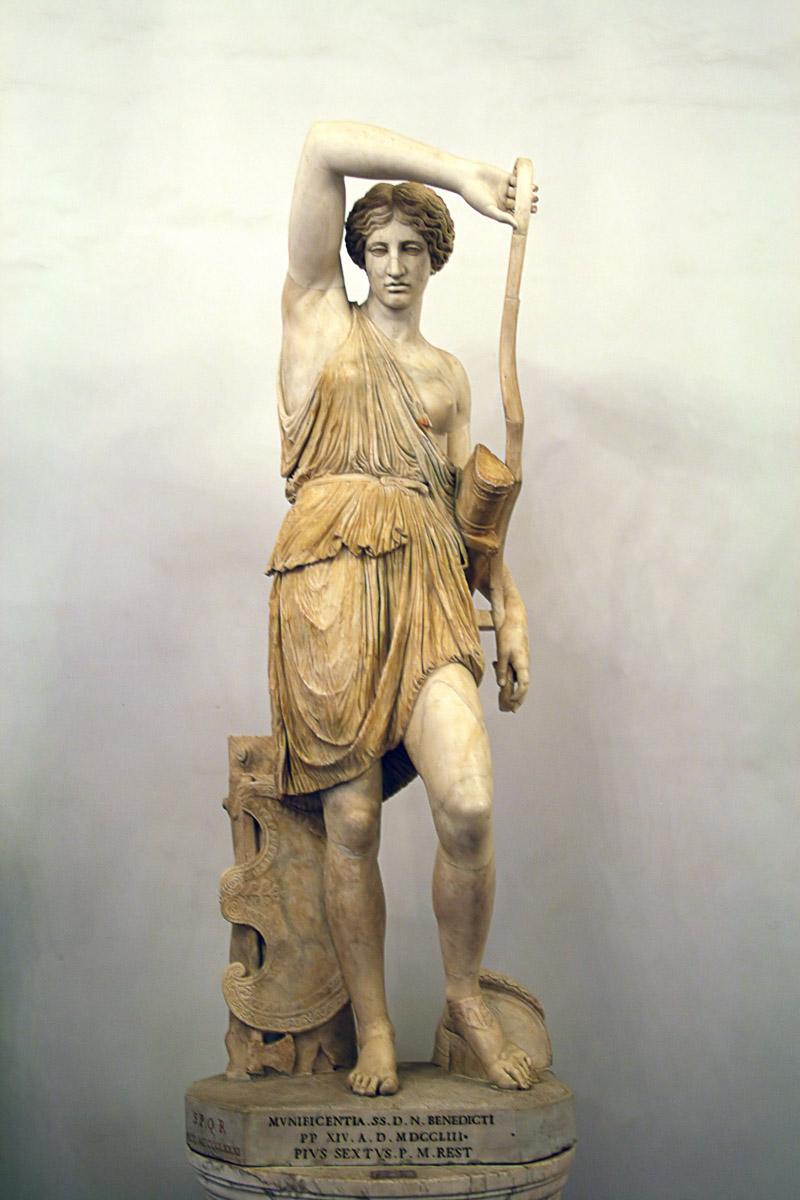
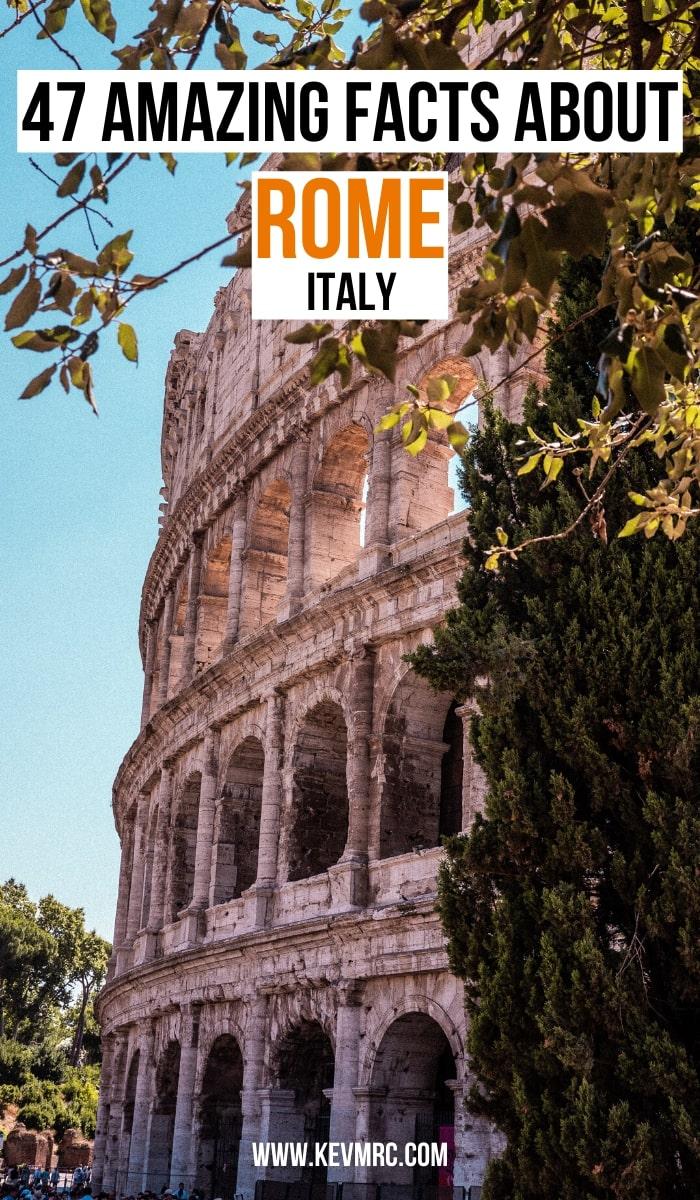

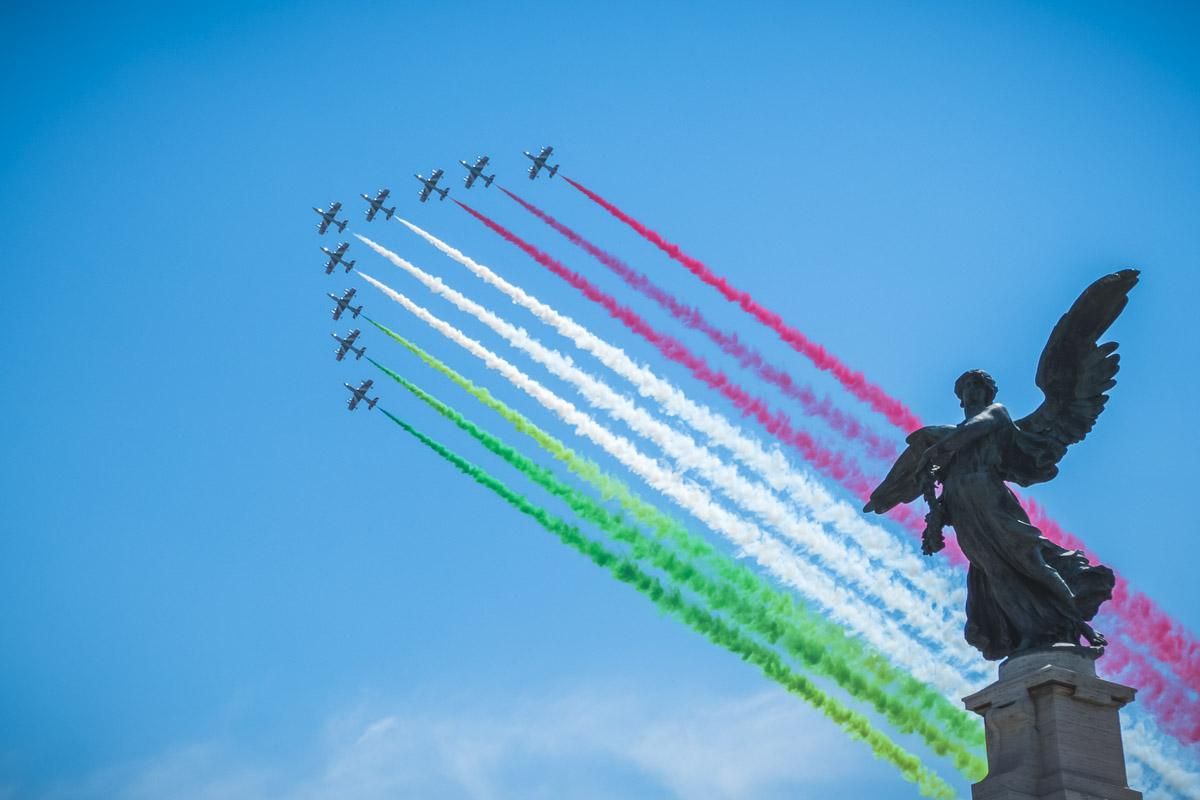
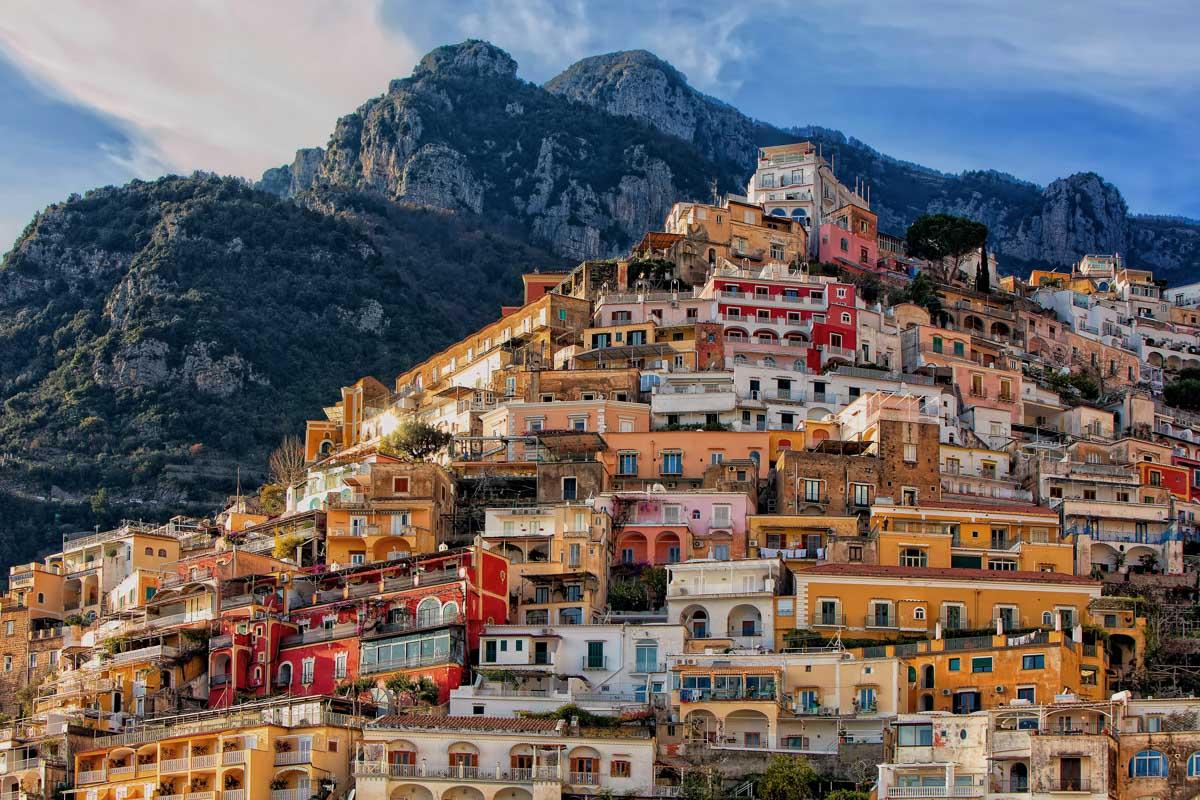
![32 Interesting Facts About Venice, Italy [True facts]](https://www.kevmrc.com/wp-content/uploads/2016/12/gondoliers-in-venice-part-of-interesting-facts-about-venice-italy.jpg)